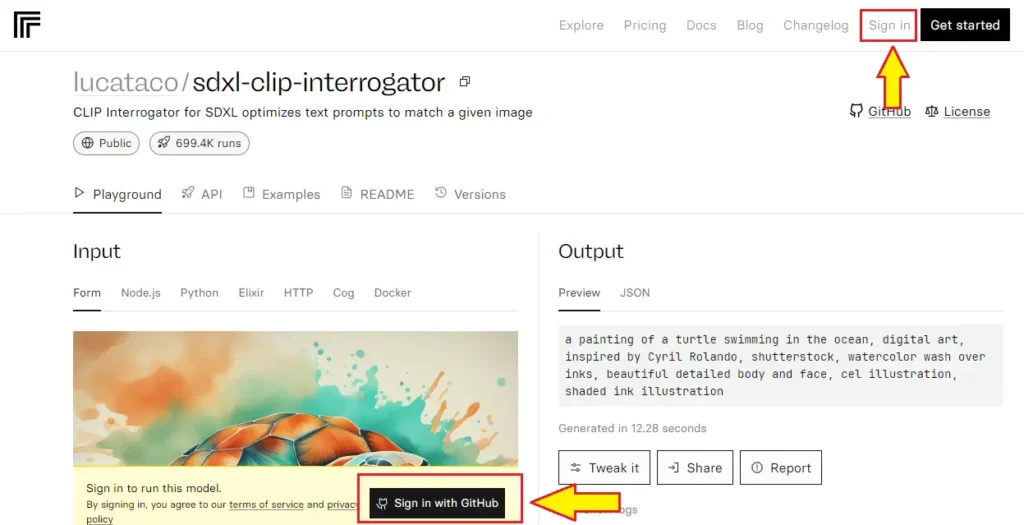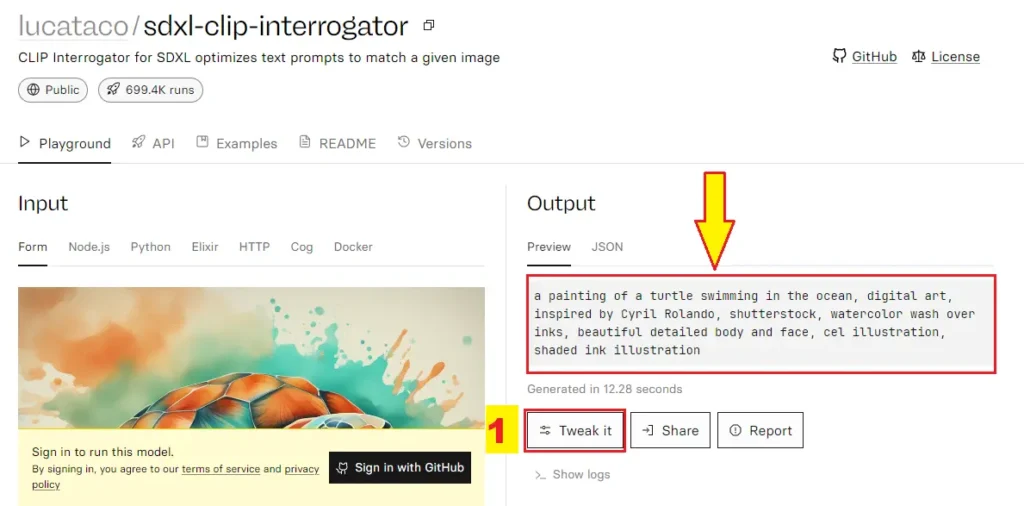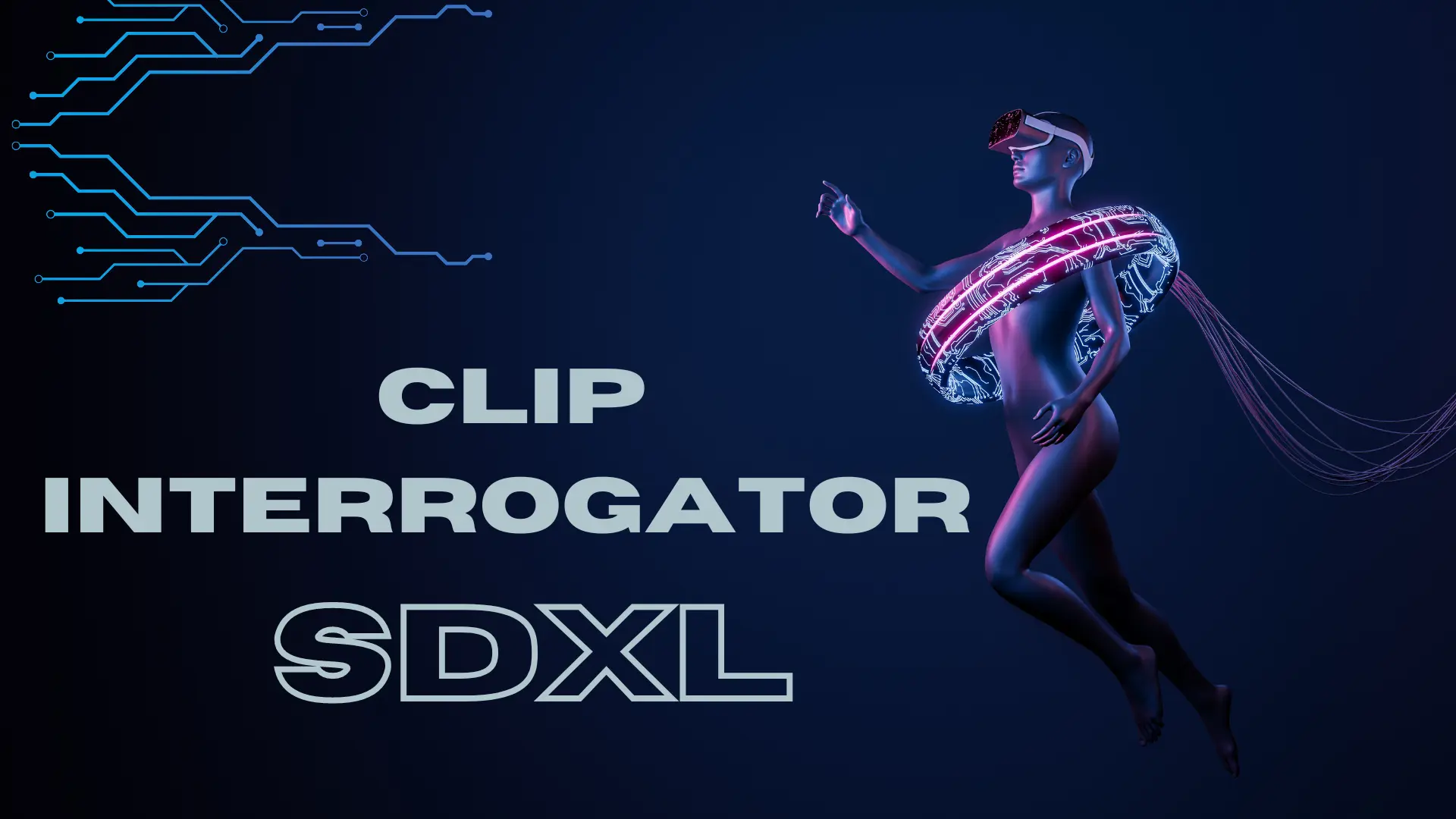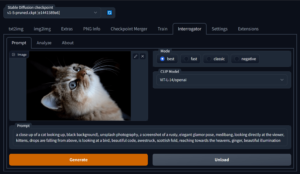Recently, I explored the lucataco/sdxl-clip-interrogator model on Replicate, a platform that hosts various machine-learning models. This model, designed to run on Nvidia A40 GPU hardware, caught my attention due to its promise of delivering predictions within just 1 second.
I decided to dive in and see how it works. Here’s a step-by-step guide based on my experience with the sdxl-clip-interrogator.
How to use CLIP Interrogator SDXL on replicate?
Step 1: Visit the Model’s Page on Replicate
- Start by navigating to the Replicate by clicking here.
This page will provide you with an overview of the model, including its capabilities and any specific instructions or documentation provided by the creator.
Step 2: Sign Up or Log In
- If you’re new to Replicate, you’ll need to sign up for an account. If you already have an account, simply log in.
- Having an account allows you to track your usage and access more features on the platform.

Step 3: Input Your Data
- Upload the image or drop the image file.
- Follow the instructions on the page to upload your data.

Step 5: Run the Model
- Click on the Run button to start the model.
- The processing time should be quick, as indicated by the model’s description.
Step 6: View the Results
- Once the model has processed your input, the results will be displayed on the same page.
- Analyze the output to see if it meets your expectations or requirements.

Step 7: Adjust and Re-run (If Necessary)
- If the results aren’t what you expected, you may need to adjust your input and try again.
How to run CLIP Interrogator SDXL Locally?
Step 1: Understanding the Model
Before using the model, it’s important to understand what it does. The sdxl-clip-interrogator is built for quick and efficient predictions, likely involving image processing or similar tasks, given its use of CLIP (Contrastive Language–Image Pretraining) technology.
Step 2: Accessing the Model
To start using the model, you first need to access it. This can typically be done through the Replicate platform.
You can visit the lucataco/sdxl-clip-interrogator page on Replicate to get started.
Step 3: Setting Up Your Environment
Ensure your system is equipped to run the model. Since it operates on Nvidia A40 GPU hardware, you’ll need a compatible environment.
If you don’t have access to such hardware, Replicate might offer cloud-based execution.
Step 4: Running the Model
Once on the model’s page on Replicate, look for instructions or an interface to run the model. Replicate usually provides an easy-to-use interface or an API endpoint.
If it’s an API, you might need to write a script or use a tool like Postman to send requests.
Step 5: Inputting Data
The next step is to input your data into the model. This could involve uploading images or providing links, depending on the model’s design.
Ensure your data is in the format expected by the model for accurate results.
Step 6: Analyzing the Predictions
After running your data through the model, analyze the predictions. The sdxl-clip-interrogator’s quick processing time means you won’t have to wait long.
Examine the output to see how well it aligns with your expectations or project requirements.
Step 7: Iterating and Improving
Based on the initial results, you might want to iterate and adjust your inputs for better outcomes. Machine learning models often require fine-tuning and multiple runs to achieve optimal performance.
Step 8: Integrating with Projects
If the model meets your needs, consider how you can integrate it into your larger project or workflow. This might involve automating the data input process or connecting the model’s output to other systems or applications.
Conclusion
Using the sdxl-clip-interrogator on Replicate can be a straightforward and rewarding experience, especially for tasks requiring quick prediction times. While the specific details of running the model depend on the tools and interfaces provided by Replicate, the general process involves understanding the model, setting up your environment, running your data, and analyzing the results.
With its fast processing capabilities, the sdxl-clip-interrogator is a powerful tool for anyone working in fields that require rapid image analysis or similar tasks.
The sdxl-clip-interrogator, with its impressive speed and reliance on advanced GPU hardware, represents a significant step forward in the field of AI and image processing.




